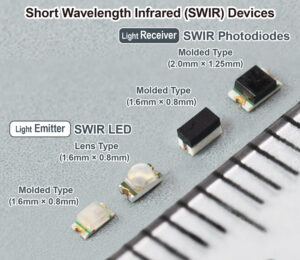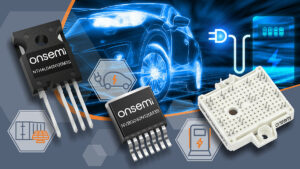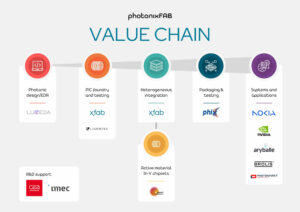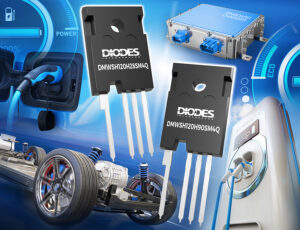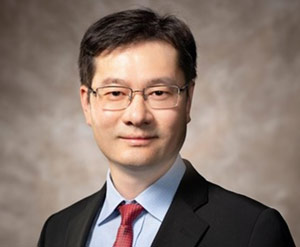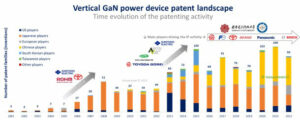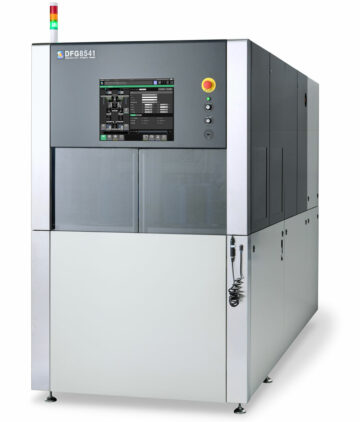News: Microelectronics
1 August 2023
Funded by the German Federal Ministry of Economic Affairs and Climate Action (BMWK) as part of the Elektro-Mobil program, the three-year research project ‘GaN4EmoBiL — GaN power semiconductors for electro-mobility and system integration through bidirectional charging’ was launched in mid-July, led by Fraunhofer Institute for Applied Solid State Physics IAF and joined by consortium partners the University of Stuttgart, Robert Bosch GmbH and Ambibox GmbH.
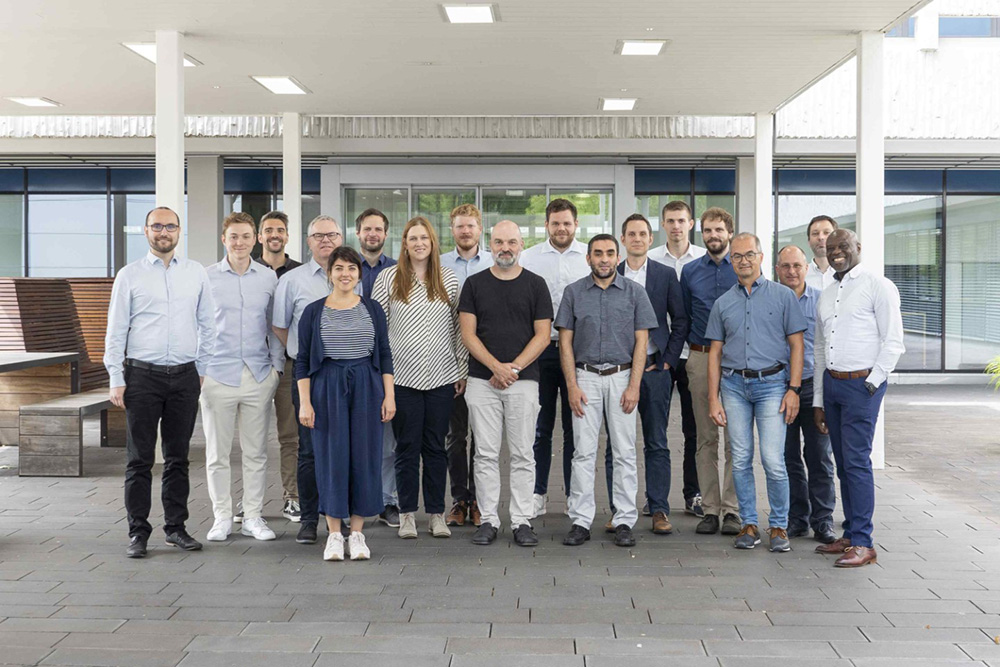
Picture: On 17 July, consortium partners Fraunhofer IAF, University of Stuttgart, Robert Bosch and Ambibox met in Freiburg for the official kick-off of the GaN4EmoBiL project.
The consortium’s goal is to demonstrate an intelligent and cost-effective bidirectional charging system using new semiconductor devices, device concepts and system components.
Bidirectional charging allows electric vehicles (EVs) to be both charged with electricity from renewable sources and discharged as needed during periods when no wind or solar energy is being produced. E-cars can thus serve as mobile electricity storage units
Consumers could use this electricity for other electrical devices or supply it to the power grid, increasing the flexibility of the energy system and contributing to energy security. However, previous technical approaches do not meet the demands for cost and efficiency, says Fraunhofer IAF. There is a lack of intelligent and cost-effective bidirectional charging systems to connect batteries, the grid, local generators and consumers with high efficiency and high power density, it adds.
“Our project aims to connect batteries, renewable energies and electrical consumers in an economical and flexible way,” says GaN4EmoBiL project coordinator Dr Stefan Mönch, a power electronics researcher at Fraunhofer IAF. “Through bidirectional charging solutions, the previously unused batteries of parking electric vehicles will make a greater contribution to increasing the flexibility of the energy system and avoiding CO2 emissions in the future,” he adds.
“In future, efficient, small-scale and intelligent charging infrastructures in electro-mobility will contribute to overcoming social challenges”, says Dr Etienne Tchonla, R&D director at Ambibox.
To ensure that bidirectional charging can be used on a broad scale, the GaN4EmoBiL consortium is therefore researching innovative charging technologies, specifically developing new semiconductor, device and system technologies for the 800V class.
Previous solutions are expensive, inefficient or too complex
To date, initial bidirectional medium-power DC wallboxes for batteries up to 800V use power semiconductor devices that are not yet optimal for this application: They are either efficient but expensive (silicon carbide) or low-cost but less efficient (silicon). Currently available 650V transistors made of gallium nitride on silicon (GaN-on-Si) are inexpensive and efficient, but require a complex circuit due to insufficient voltage rating.
To integrate as many batteries as possible bidirectionally, the cost, efficiency and compactness of charging solutions must be significantly improved, says Fraunhofer IAF. For this purpose, the GaN4EmoBiL project partners are researching new semiconductor solutions as a first step. They aim to realize a new cost-effective GaN technology on alternative substrates (for example sapphire) enabling low-cost and efficient 1200V transistors. On this basis, they are developing new system components (bidirectional charging cable and charger) and investigating their reliability for significantly increased operating hours.
At the end of the project, demonstrators should be able to fill the R&D gap that currently exists between cost, efficiency, compactness, functionality, power class and voltage class (800V batteries). Furthermore, the consortium aims to promote knowledge transfer between universities, research institutions and industry, train young scientists and secure national know-how in the field of electro-mobility.
- SEO Powered Content & PR Distribution. Get Amplified Today.
- PlatoData.Network Vertical Generative Ai. Empower Yourself. Access Here.
- PlatoAiStream. Web3 Intelligence. Knowledge Amplified. Access Here.
- PlatoESG. Automotive / EVs, Carbon, CleanTech, Energy, Environment, Solar, Waste Management. Access Here.
- BlockOffsets. Modernizing Environmental Offset Ownership. Access Here.
- Source: https://www.semiconductor-today.com/news_items/2023/aug/gan4emobil-010823.shtml
- :is
- :not
- $UP
- 17
- a
- Able
- Action
- Adds
- Affairs
- aim
- aims
- allows
- alternative
- an
- and
- Application
- applied
- approaches
- ARE
- AS
- At
- AUGUST
- available
- avoiding
- basis
- batteries
- BE
- being
- between
- Bosch
- both
- broad
- but
- by
- cable
- CAN
- charged
- charging
- class
- Climate
- climate action
- complex
- components
- concepts
- Connect
- consortium
- Consumers
- contribute
- contributing
- contribution
- Coordinator
- Cost
- cost-effective
- could
- Currently
- Date
- dc
- demands
- demonstrate
- density
- developing
- device
- Devices
- Director
- do
- dr
- due
- during
- Economic
- efficiency
- efficient
- either
- Electric
- electric vehicles
- electricity
- Electronics
- Emissions
- enabling
- end
- energy
- ensure
- Ether (ETH)
- example
- exists
- expensive
- Federal
- field
- fill
- First
- Flexibility
- flexible
- For
- from
- functionality
- Furthermore
- future
- gap
- generators
- German
- GmBH
- goal
- greater
- Grid
- he
- High
- HOURS
- However
- HTML
- http
- HTTPS
- improved
- in
- increased
- increasing
- industry
- inefficient
- inexpensive
- infrastructures
- initial
- innovative
- Institute
- institutions
- integrate
- integration
- Intelligent
- IT
- joined
- jpg
- July
- kick-off
- knowledge
- Lack
- launched
- Led
- less
- local
- low-cost
- made
- make
- many
- Meet
- met
- ministry
- Mobile
- must
- National
- needed
- New
- no
- of
- official
- on
- operating
- optimal
- or
- Other
- overcoming
- parking
- part
- partners
- periods
- Physics
- plato
- Plato Data Intelligence
- PlatoData
- possible
- power
- Power grid
- previous
- previously
- Produced
- Program
- project
- promote
- purpose
- R&D
- rating
- realize
- reliability
- Renewable
- require
- research
- Research Institutions
- researcher
- ROBERT
- says
- Scale
- scientists
- secure
- security
- semiconductor
- Semiconductors
- serve
- should
- significantly
- Silicon
- silicon carbide
- Social
- solar
- solar energy
- solid
- Solutions
- Sources
- specifically
- State
- Step
- storage
- supply
- system
- Systems
- targets
- Technical
- Technologies
- Technology
- that
- The
- their
- There.
- therefore
- they
- this
- Through
- Thus
- to
- too
- Train
- transfer
- units
- Universities
- university
- unused
- use
- used
- using
- Vehicles
- Voltage
- was
- Way..
- when
- will
- wind
- with
- yet
- young
- zephyrnet

